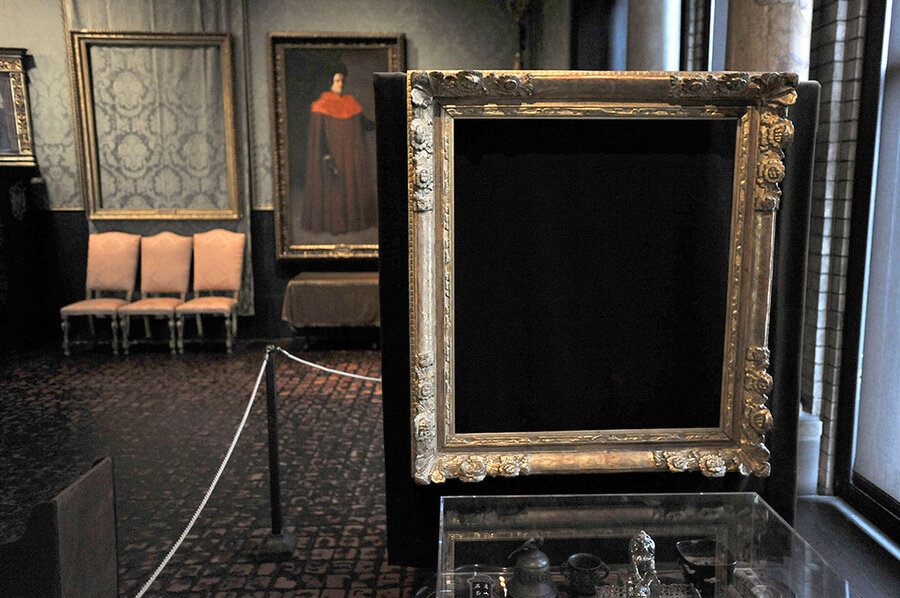Isabella Stewart Gardner theft: Is the massive art heist about to be solved?
Loading...
Over 25 years ago, the biggest art theft in US history targeted the Isabella Stewart Gardner Museum in Boston, whisking away 13 masterpieces – worth $500 million – in a shocking heist.
In the latest twist of this still-unsolved crime, FBI agents descended Monday upon the house of a Connecticut mobster, currently behind bars awaiting trial for firearms offenses.
It is the third time the FBI has searched the home of octogenarian Robert Gentile, where four years ago investigators found a handwritten list of the stolen works of art.
“He’s always maintained he’s had nothing to do with the theft of the art,” says Ryan McGuigan, Robert Gentile’s lawyer, in a telephone interview with The Christian Science Monitor. “It stands to reason they [the FBI] have a deep conviction he’s in possession of the art. You wouldn’t go back to the house a third time otherwise.”
Mr. McGuigan sat outside his client’s property as law enforcement officers executed the search, which he told the Monitor included about 20 agents and nine trucks involved in "digging around the property."
While the details of the search warrant remain undisclosed – and will likely remain so unless Mr. Gentile is charged, says McGuigan – the scale of the effort indicates another attempt to solve the biggest art theft in US history.
Gentile, currently being held without bail on federal weapons charges, is accused of selling a firearm to a convicted killer.
Last year, Gentile was recorded telling an undercover FBI agent that he had access to two of the stolen paintings and was able to sell them for $500,000 apiece.
Moreover, in a 2012 search of Gentile’s property, Reuters reports, federal agents “turned up a handwritten list of the stolen art, its estimated value, and police uniforms.”
This last ties in with a key detail of the infamous crime.
At 1:24 a.m. on March 18, 1990, two men dressed as Boston police officers approached the museum’s entrance and told the security guard they were responding to calls about a disturbance.
Breaking protocol, Rick Abath, a musician moonlighting as a security guard, let them in, paving the way for the subsequent 81-minute heist.
“When people say, 'Well, why is it important?' I say, 'Imagine if you could never hear Beethoven's Seventh Symphony again, ever,’ " said museum director Anne Hawley to CBS News. She said the 13 stolen masterpieces include Vermeers and the only known seascape by Rembrandt.
"It makes me want to weep," said Ms. Hawley. "It's time to bring them back."






